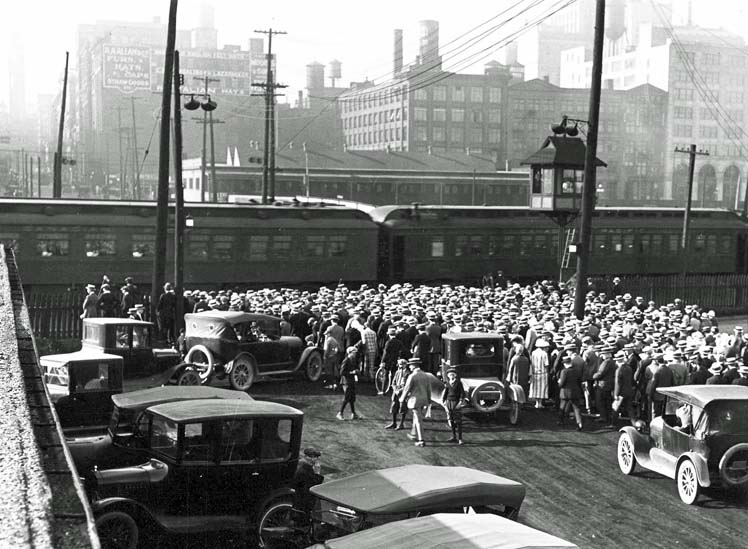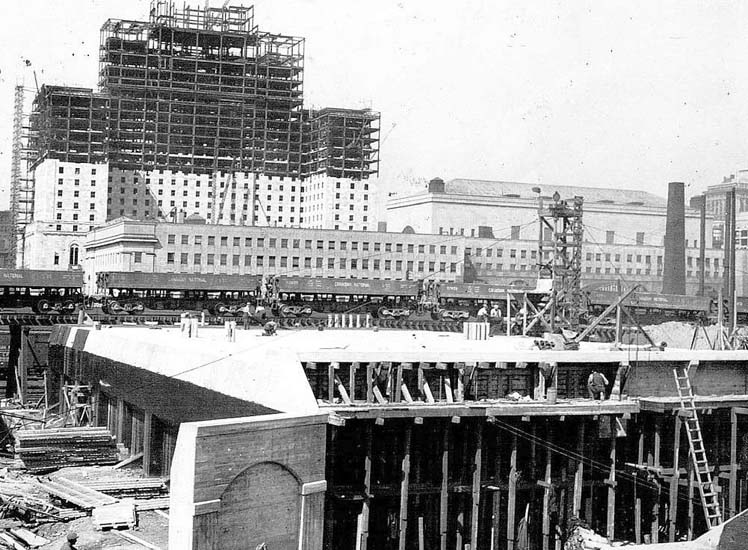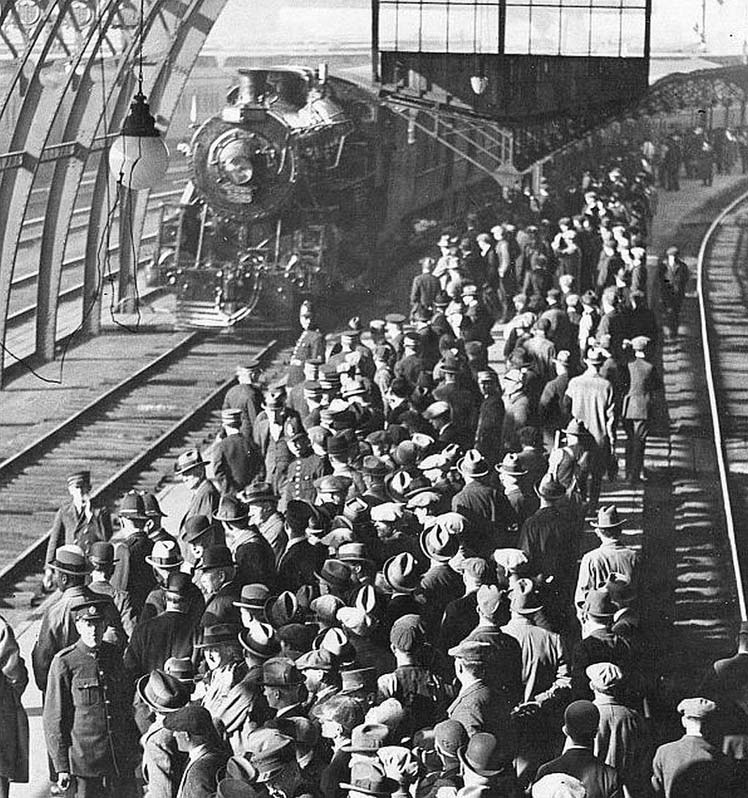
From the time trains began crossing the city's waterfront more than a century-and-a-half ago, pedestrians (as well as horses and wagons) were at risk.
In this 1923 photo from the City of Toronto Archives a large crowd of pedestrians, no doubt returning from a Maple Leaf baseball game at the Hanlan's
Point Stadium on Toronto Island, wait patiently while a passenger train clears the Bay Street crossing. However, there were many instances when people
held up by the slowly shunting or stopped trains, eager to catch the ferry to a school, church picnic, on the Island, or a lake steamer bound for
Queenston with a connection to the Falls, decided to chance it by crawling under one of the railway cars. A sudden start up could mean disaster -
1923 Photographer unknown.
19 January 2019
Elevation Put Old Toronto
on Track to the Future
on Track to the Future
Toronto Ontario - In last week's column I featured the interesting evolution of one of the city's busiest downtown thoroughfares and one
that will hobble traffic between Lake Shore Boulevard West and Bremner Boulevard for the next 15 months.
An interesting feature of York Street as well as Cherry, Parliament, Sherbourne, Jarvis, Yonge, and Bay and (most recently) Lower Simcoe Streets, are the
subways (which is what any underpass beneath railway tracks was called in days past) that carry trains safely over city streets.
But it wasn't always that way.
Some of those thoroughfares were often death traps.
Toronto's new cross waterfront elevated viaduct to the rescue.
Mike Filey.

Visible in this unusual view, taken in the summer of 1928, several tradesmen can be seen working on the new elevated railway viaduct, originally
requested by city officials after many of its downtown buildings were devastated by fire in April 1904. Upon completion, this $26 million ($400
million in 2019) viaduct would finally permit passenger trains, operated by both CNR and CPR, access to the city's magnificent new Union Station.
Though officially opened by Edward, the Prince of Wales, on 6 Aug 1927 it had thus far been severely under utilized because the $6 million
(equivalent to $90 million in 2019 dollars) station had been designed with an elevated rail corridor in mind. This feature would permit pedestrians
and vehicles safe access to and from the waterfront through subways (tunnels) under the multi-track rail corridor. The idea of a viaduct had been
on the books ever since the first trains began crossing the young city's waterfront in 1853. However, just who would pay for the massive viaduct
became the subject of years of deliberation and although the federal government's Railway Board ordered its construction in late 1908, another 16
years passed before the Viaduct Agreement was signed by all concerned and work could commence. It was exactly 89 years ago tomorrow that the first
trains arrived at Union Station on the new high level tracks. In the background of this photo is the Royal York Hotel, still a year away from opening
as well as a view of the south side of today's Union Station. In the foreground, the future opening for the southbound York Street vehicle subway and
the adjacent pedestrian teamway are seen - 1928 Photographer unknown - Toronto Public Library.

It was just a few minutes after 10:30 on the morning of 21 Jan 1930 that the first of two trains inaugurated passenger service over two of the six
tracks of the new elevated railway viaduct that connected with Toronto's magnificent Union Station. In this view CNR's Train number 208 from
Stratford, Engineer Brown, Conductor Saunders, enters the station while from the east CPR's Train number 601, Engineer Lloyd, Conductor Hirons,
carrying passengers from Peterborough made its entrance at exactly the same moment. A crowd of more than 300 railway, city officials, and lucky
invited guests, led by Toronto mayor Bert Wemp, gave a resounding three cheers. After decades of pleading, designing, and building, Toronto's illusive
cross waterfront viaduct was finally operational - 21 Jan 1930 Photographer unknown.
☀1. Appropriate news article photograph inserted.
☀2. Original news article photograph replaced.
News quoted by OKthePK website under the
provisions in Section 29 of the Canadian
Copyright Modernization Act.
provisions in Section 29 of the Canadian
Copyright Modernization Act.


